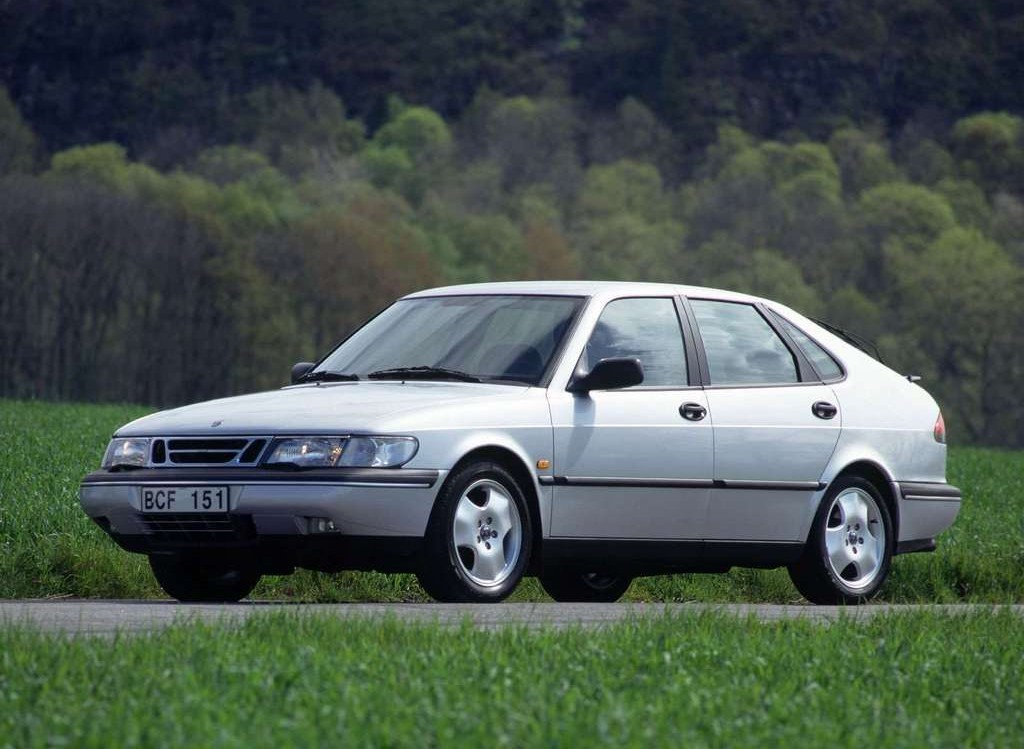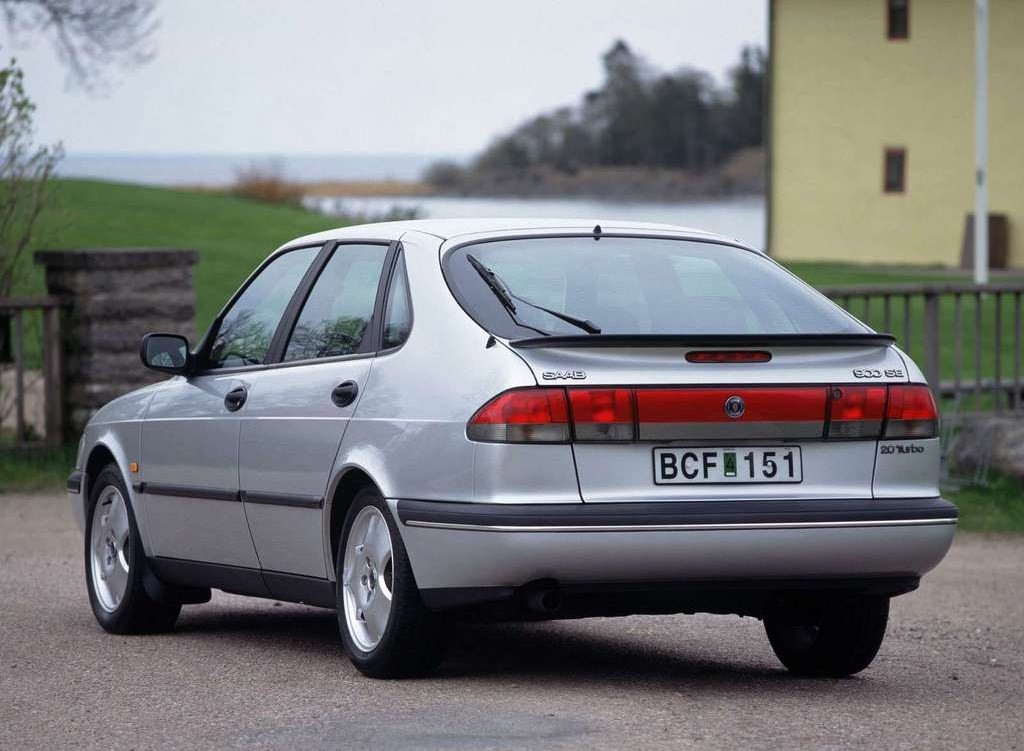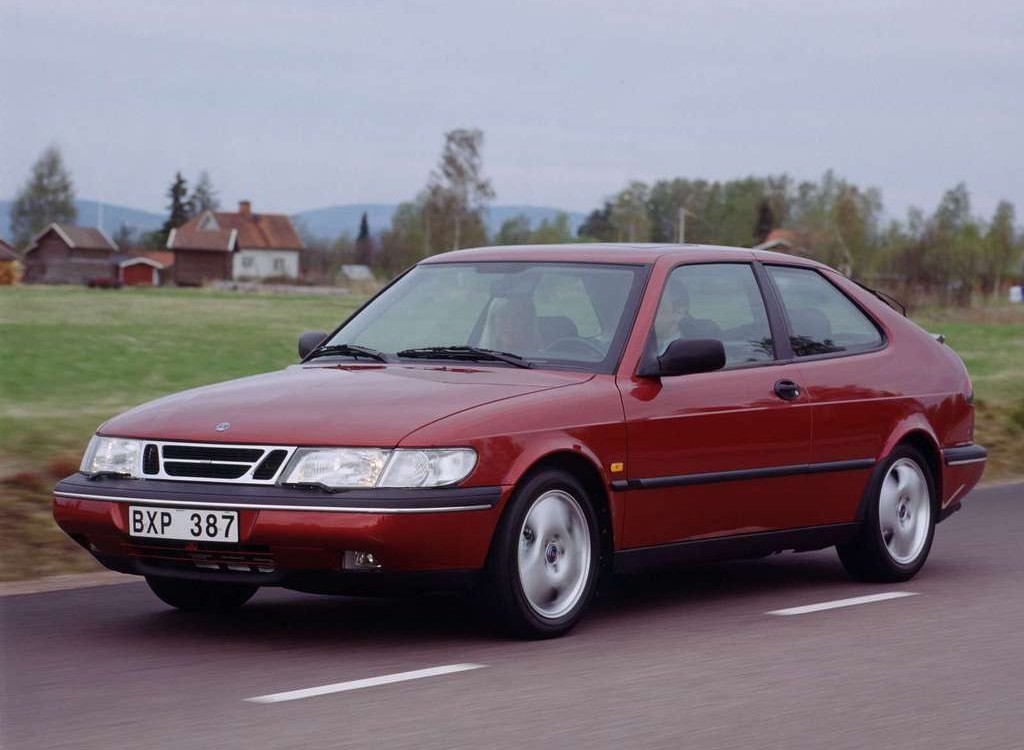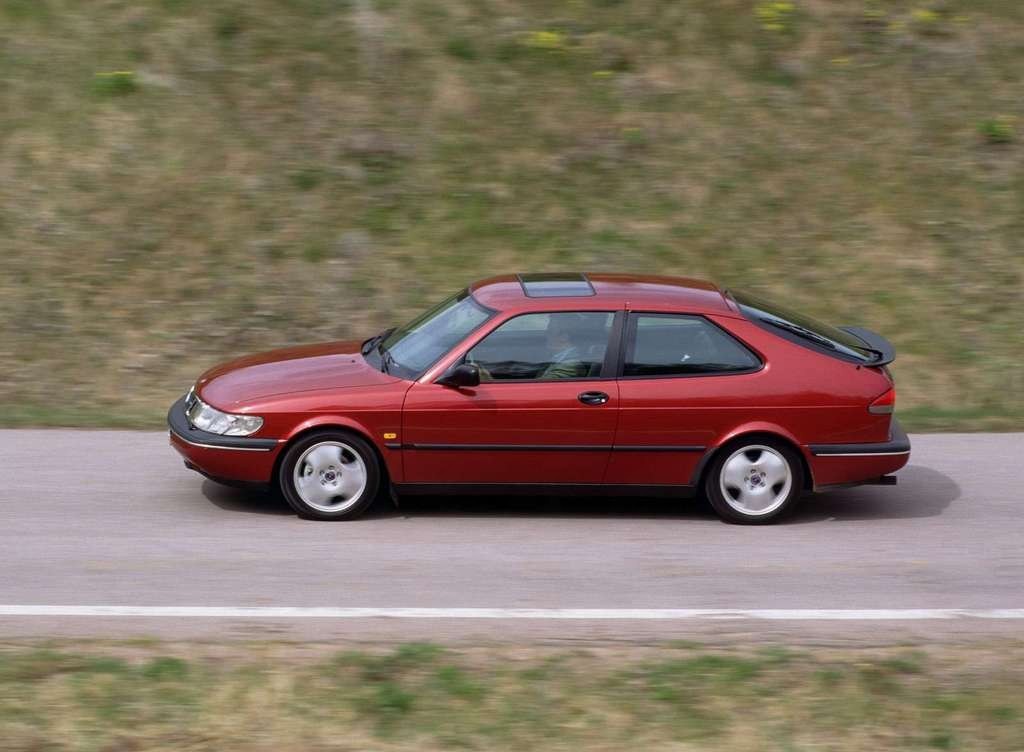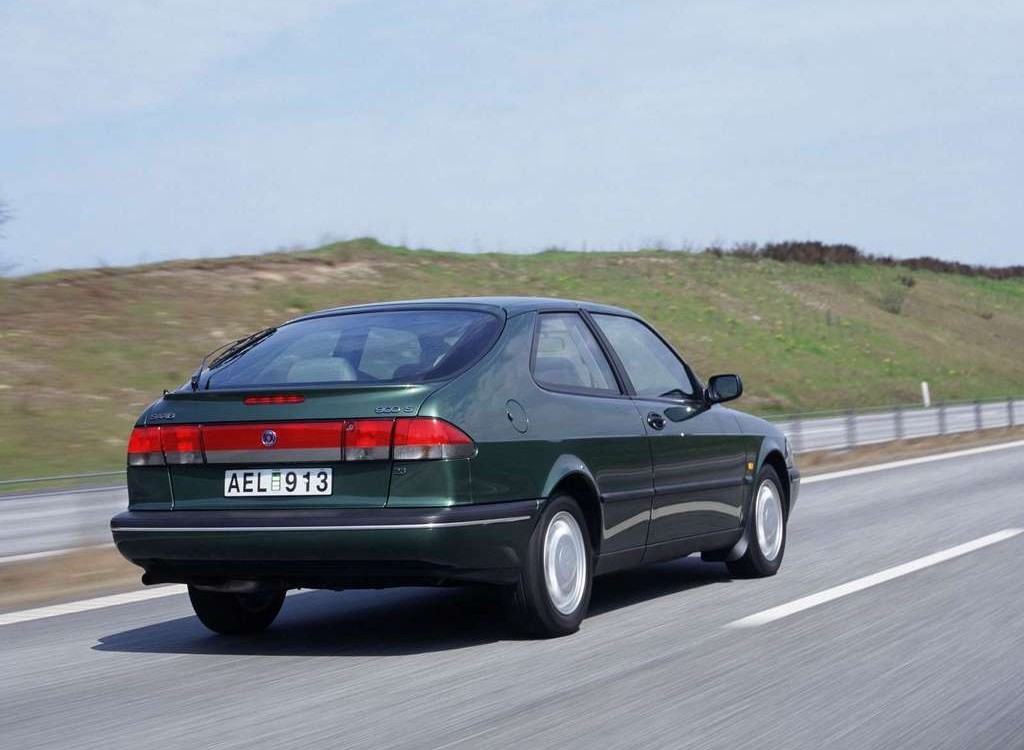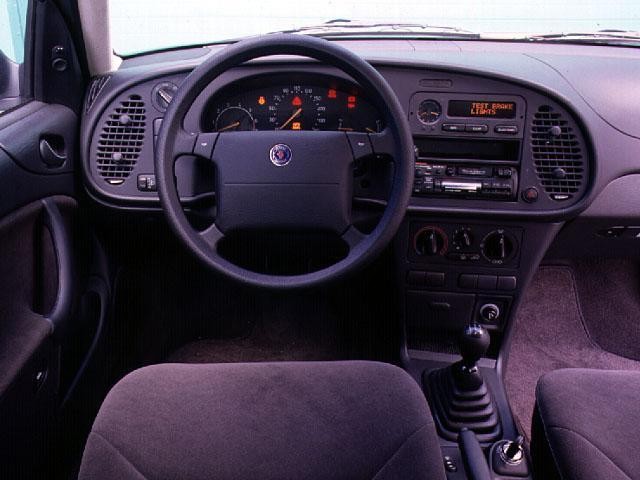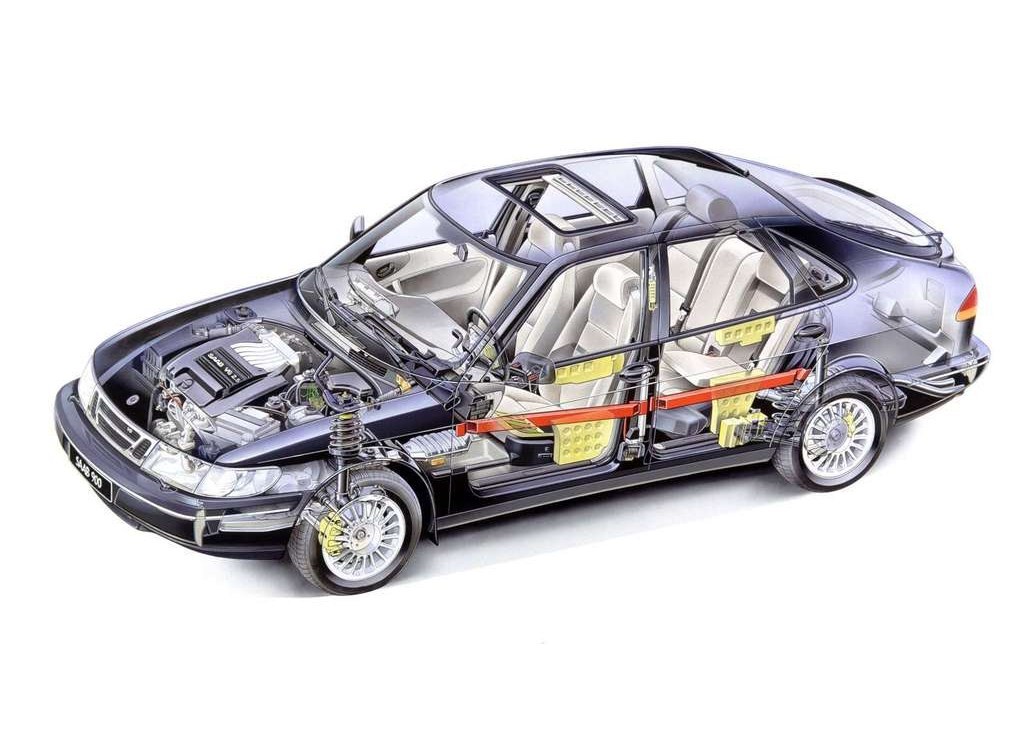
- Responsive 2.5-litre V6 engine
- Refined manual transmission
- Competent ride/handling balance
- Large cargo area
- Steering wheel kickback over bumps
- For manual models, cramped driver’s footwell
- Poor rear visibility
Overview
Released in March 1994, the Mk.2 900 was a mid-size liftback, available in three- or five-door bodies. Manufactured in Trollhattan, Sweden, the front-wheel drive Mk.2 900 range consisted of 2.0, 2.3, 2.0T and 2.5 V6 variants, while transmission choices consisted of four-speed automatic or five-speed manual units (see table below). Beyond the variants, the Mk.2 900 was available in S and SE editions.
Engines
Of the engines,
- The 2.0-litre B204 and 2.3-litre B234 engines both had cast iron blocks, aluminium cylinder heads, double overhead camshafts and four valves per cylinder. However,
- The B204i engine for the 2.0 variants had a compression ratio of 10.1:1;
- The B234i engine for 2.3 variants had a compression ratio of 10.0:1;
- The B204L engine for 2.0T variants had a Garrett T25 turbocharger which provided beak boost pressure of 0.73 bar (10.6 psi) and a compression ratio of 9.2:1; and,
- The 2.5-litre B258l V6 engine had a cast iron block, an aluminium cylinder head, double overhead camshafts, four valves per cylinder and a compression ratio of 10.8:1.
Platform and dimensions
The Saab Mk.2 900 was underpinned by General Motors’ GM2900 platform which was shared with the Opel Vectra A and Vauxhall Mk.3 Cavalier. As a result, the Mk.2 900 had transversely mounted engines and a rear-hinged bonnet, rather than the longitudinally mounted engines and a front-hinged bonnet of the original Saab 900.
The Mk.2 900 was 4637 mm long, 1711 mm wide, 1436 mm tall and had a 2600 mm long wheelbase.
Suspension
The Saab 900 had MacPherson strut front suspension (with a split lower wishbone and stabiliser bars) and a semi-rigid trailing rear axle with inner and outer stabiliser bars.
| Body | Variant | Edition | Years | Engine | Trans. | Peak power | Peak torque |
|---|---|---|---|---|---|---|---|
| 3dr | 2.0 | S | 1994-97 | 2.0-litre petrol I4 | 5sp man., 4sp auto |
98 kW at 6100 rpm | 180 Nm at 4300 rpm |
| 2.3 | S | 1997-98 | 2.3-litre petrol I4 | 5sp man., 4sp auto |
110 kW at 5700 rpm | 210 Nm at 4300 rpm | |
| 2.0T | SE | 1994-97 | 2.0-litre turbo petrol I4 | 5sp man. | 136 kW at 5500 rpm | 263 Nm at 2100 rpm | |
| 4sp auto | 136 kW at 5750 rpm | 230 Nm at 2000 rpm | |||||
| 5dr | 2.0 | S | 1994-97 | 2.0-litre petrol I4 | 5sp man., 4sp auto |
98 kW at 6100 rpm | 180 Nm at 4300 rpm |
| 2.3 | S | 1994-98 | 2.3-litre petrol I4 | 5sp man., 4sp auto |
110 kW at 5700 rpm | 210 Nm at 4300 rpm | |
| 2.5 V6 | S, SE |
1994-97 | 2.5-litre petrol V6 | 5sp man., 4sp auto |
125 kW at 5900 rpm | 227 Nm at 4200 rpm | |
| 2.0T | SE | 1997-98 | 2.0-litre turbo petrol I4 | 5sp man. | 136 kW at 5500 rpm | 263 Nm at 2100 rpm | |
| 4sp auto | 136 kW at 5750 rpm | 230 Nm at 2000 rpm |
Safety equipment
Standard safety equipment for the Saab Mk.2 900 included a driver’s airbag and ABS; the 2.5 V6 variants were further equipped with traction control, while the SE editions added a front passenger airbag.
In September 1995, standard safety equipment was extended to include a front passenger airbag and electronic brake force distribution.
Euro NCAP crash testing
In Euro NCAP crash testing , a 1997 Saab 900 five-door liftback – fitted with a 2.0-litre petrol engine and equipped with dual front airbags – received a two star adult occupant protection rating with a score of 12, though the second star was struck out. In the frontal offset impact, the passenger compartment lost structural stability and there was moderate footwell intrusion – as a result, protection for the driver’s chest and feet were rated as poor. In the side impact, chest protection was assessed as poor and abdominal protection as weak.
Features
Standard features for the 900 2.0 S included four speaker sound system with a radio and cassette player, air conditioning, heated front seats, front fog lights, central locking, power windows, power mirrors and a height and reach adjustable steering wheel. The 900 2.3 S was further equipped with cruise control, while the 2.5 V6 S added alloy wheels.
The 900 2.0T SE and 2.5 V6 SE were further equipped with a CD player, leather seats, a leather-wrapped steering wheel, remote central locking and power sunroof.
In September 1995, standard features were extended to include an alarm and immobiliser.
1997 Saab 900 Talladega
In March 1997, ‘Talladega’ badged versions of the 2.3 S and 2.0T SE were released; the Talladega models featured 16-inch seven-spoke alloy wheels and body-coloured bumpers and door mirrors.
Related links
